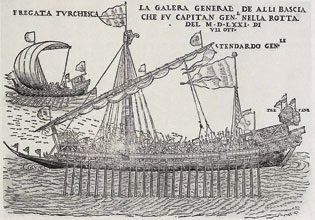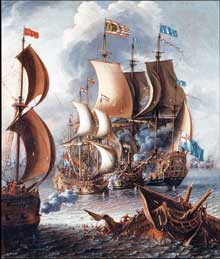The story is not yet exposed to sunlight.
In 1978, Stan South was recognized as the archaeologist who discovered Santa Elena, the “lost” capital of La Florida. In the South Carolina press, and one small story in the New York Times, that’s how Stan’s discovery was announced. But in the outside world, most people seem to have understood the press release as saying that Stan South had discovered an early capital of the state of Florida.But Santa Elena was not an old capital of Florida state. Santa Elena was the capital of the first European colony in what is now the U.S. – it was Spanish, not English – and that colony extended from Newfoundland to the Keys and from the Atlantic to at least the Mississippi River. Thus, what Stan South had discovered was much more important than how it read in the newspapers. As Dr. Larry Rowland constantly reminds me, history is a fusion of two inputs – one input comes from the archaeologists who dig up the physical history. The other comes from the historians who discover the behind-the scenes-story through old documents. When you combine the knowledge from both, you get the complete story.
But the complete story of Santa Elena was not known in 1979 when Stan South publically confirmed that the Spanish fort on Parris Island was really on the site of Santa Elena, the capital of Europe’s first colony. Along with that information, two of the country’s major 16th century historians knew that there was a bigger story. Both archaeologist Stan South and historians Dr. Lyon and Dr. Hoffman knew that both France and Spain had targeted Port Royal Sound as their starting point. Spain, in particular, had worried that if France occupied Port Royal Sound, it would be in the best position to pick off Spain’s treasure fleet as it returned to Spain. And France wanted to occupy the Sound for that very reason. Dr. Lyon knew also knew that Spain’s first colony had a governor, Pedro Menendez de Aviles, who was a real life John Wayne. He was an incredible conquistador, seaman, and leader. Dr. Lyon knew that Pedro Menendez saw Santa Elena as the hub and starting point for his planned inland road to Mexico. Furthermore, Menendez also saw Santa Elena as the hub for his plan to find the northwest passage to China.
By 1990 Dr. Lyon’s understanding of Santa Elena had been expanded by Dr. Paul E. Hoffman, the distinguished professor of 16th century colonial Spanish from L.S.U. Dr. Hoffman went further in explaining how Spain first discovered and became interested in North America. He set the stage for understanding why Spain zeroed in on South Carolina as its starting point.
By 2012, however, the two collections of knowledge on Santa Elena had really not been exposed to the sunlight. The South Carolina archaeologists had only intermittently uncovered 6% of the Santa Elena site. Stan South’s assistant Dr. Chester DePratter had generated even more interest in the project, but funding was difficult. Meanwhile the work of the two historians had not yet reached the attention of the national press. If Santa Elena was a potential new product we would have said this about it: “The product is still in Research and Development. It is only known by a few and the company has not yet introduced it to the public.”
How did Santa Elena first get exposed to the sunlight? It started in 2011. In 2011 three curious Beaufort County businessmen asked themselves the question: ”Why are our homeowner insurance rates so high when we rarely see any hurricanes?” I did the initial research on this question. After months of digging we finally got the straight story. One major simulation company that projects hurricane risk for the insurance industry readily admitted to me that the threat for hurricanes in southern South Carolina is LOW. With Stu Rodman and Andy Twisdale of Hilton Head on my team, it did not take long to understand why the homeowner’s insurance industry was receiving its highest return on investment from you and me. It was clear that the state was not effectively regulating homeowner’s insurance rates. And it was also clear that no one had been challenging the insurance companies. However, we did!









